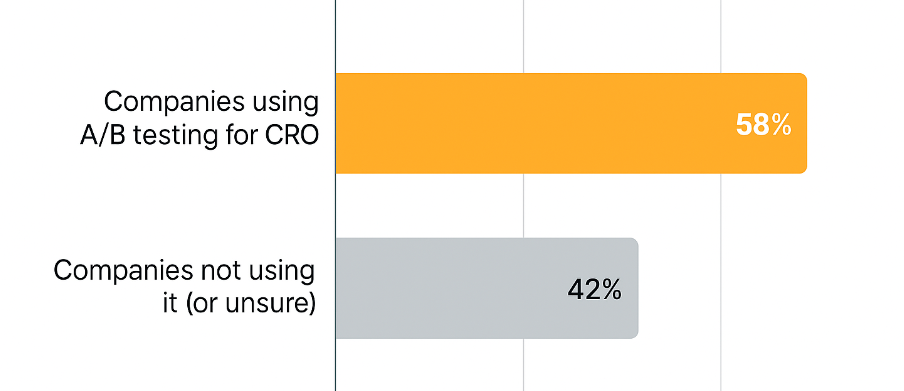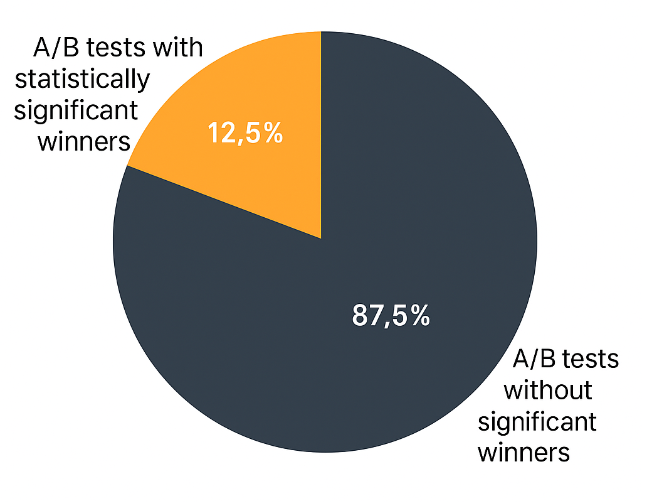This article breaks down the key principles and mistakes to avoid so you can make data-backed decisions that improve your marketing performance.
A/B testing isn’t just a buzzword—it’s one of the most powerful tools for improving marketing campaigns, landing pages, and user experiences. By comparing two or more variations of a single element, you can understand what truly resonates with your audience and make confident, data-driven changes.

More than half of companies are already using A/B testing for conversion optimisation
According to a 2024 survey by HubSpot, 74% of marketers use A/B testing to optimize conversion rates, and companies that run regular experiments see a 20% higher ROI on average compared to those that don’t.
Step 1: Define a Clear Hypothesis
Before testing anything, start with a solid hypothesis. A well-structured A/B test begins with a question and a measurable goal. For example:
-
“If we shorten the signup form, will completion rates increase?”
-
“Will a stronger call-to-action button improve conversions?”
Each test should focus on a single variable to ensure that the results are clear and actionable.
Step 2: Choose the Right Metric
Your success metric must align with your campaign goals. For example:
-
Email campaigns: Open rate, click-through rate, or conversion rate.
-
Landing pages: Form submissions, purchases, or time on page.
-
Ad creatives: CTR or cost per conversion.
Tracking too many metrics at once dilutes insights—focus on the one that best reflects your primary objective.
Step 3: Run the Test Long Enough
One of the most common A/B testing mistakes is stopping too early. Statistical significance matters. If your sample size is too small, your results could be misleading.
A rule of thumb: aim for at least 95% confidence level before drawing conclusions. Tools like Google Optimize and other analytics platforms help calculate when you’ve gathered enough data to make reliable decisions.
Step 4: Avoid Testing Too Many Variables

Only about one in eight tests generates a clear winner — underlining the importance of test design and patience
Multivariate testing can be useful, but for most marketers, simpler A/B tests deliver clearer insights faster. Focus on a single change—like a headline, button color, or image—and build from there. Incremental changes backed by consistent testing yield sustainable growth.
Step 5: Analyze and Act on Results
After collecting enough data, analyze the results objectively. Even if the outcome doesn’t match your expectations, it’s still a win—you’ve learned what doesn’t work. Document results, share findings with your team, and plan the next iteration.
According to VWO’s research, only 1 in 7 A/B tests produce statistically significant winners, yet those few deliver massive performance gains when applied strategically.
Step 6: Build a Continuous Testing Culture
A/B testing shouldn’t be a one-time project. The most successful marketers run ongoing experiments to adapt to changing user behavior and market conditions. Regular testing encourages innovation and ensures decisions are driven by real data, not assumptions.
Final Thoughts
Effective A/B testing requires patience, discipline, and a structured approach. When done right, it uncovers insights that can transform how you design, write, and optimize your marketing assets. Remember—the goal isn’t to guess what works; it’s to prove what works.

